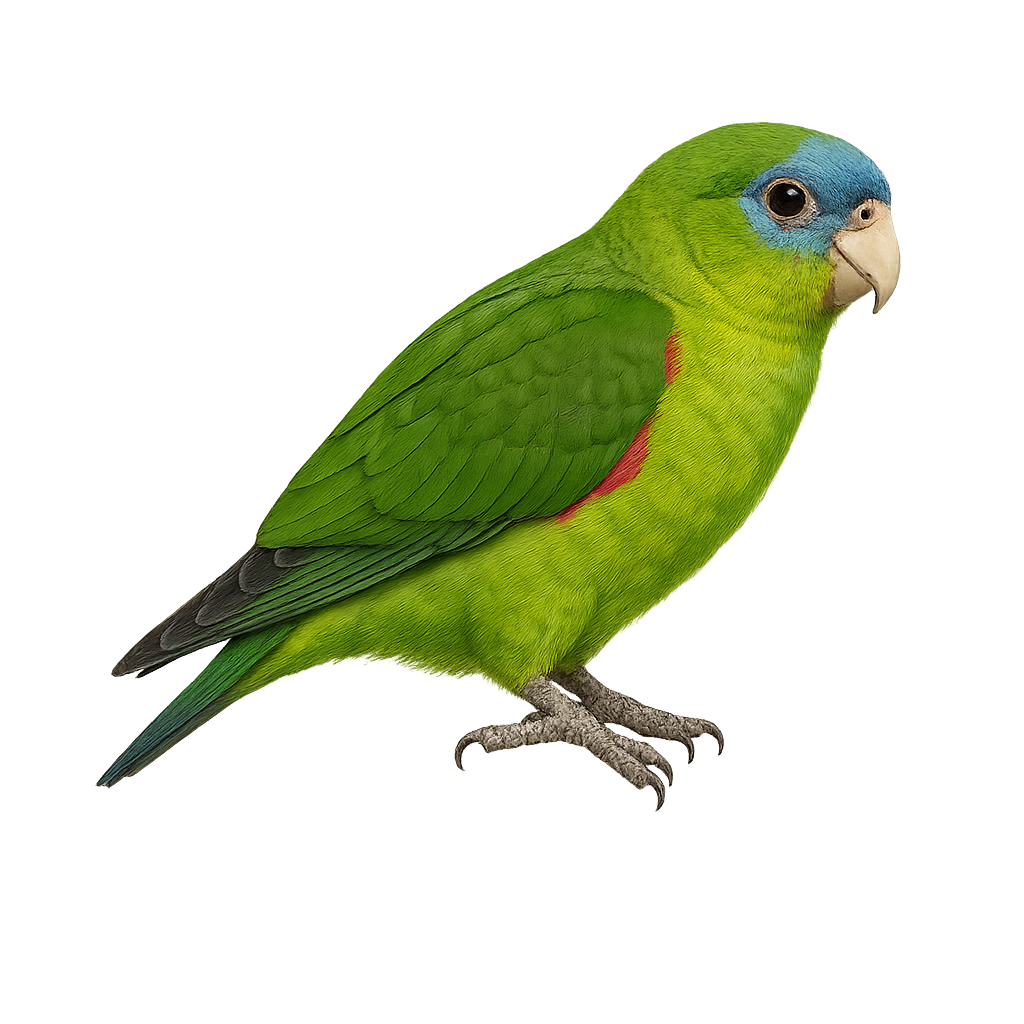Your wildlife photography guide.
Explore the scarlet-shouldered parrotlet in detail, study its behavior, prepare your shots.
Where to observe and photograph the scarlet-shouldered parrotlet in the wild
Learn where and when to spot the scarlet-shouldered parrotlet in the wild, how to identify the species based on distinctive features, and what natural environments it inhabits. The WildlifePhotographer app offers tailored photography tips that reflect the scarlet-shouldered parrotlet’s behavior, helping you capture better wildlife images. Explore the full species profile for key information including description, habitat, active periods, and approach techniques.
Scarlet-shouldered Parrotlet
Scientific name: Touit dilectissimus

IUCN Status: Near Threatened
Family: PSITTACIDAE
Group: Birds
Sensitivity to human approach: Suspicious
Minimum approach distance: 10 m
Courtship display: March to April
Incubation: 20-22 jours
Hatchings: April to May
Habitat:
Humid forests, dense canopies, subtropical areas
Activity period :
Primarily active during the day, with peak activity in the morning and late afternoon.
Identification and description:
The Scarlet-shouldered Parrotlet is a small, colorful parrot, primarily green with distinctive scarlet shoulders. It inhabits the humid forests of northern South America, particularly in Colombia and Venezuela. This parrot prefers dense canopies where it primarily feeds on fruits, seeds, and flowers. It is often observed in small groups, although it can be difficult to spot due to its plumage blending into the foliage. The Scarlet-shouldered Parrotlet is a discreet bird, with a song that is a mix of soft whistles and chirps. Its population is declining due to deforestation and capture for the pet trade.
Recommended lens:
400 mm – adjust based on distance, desired framing (portrait or habitat), and approach conditions.
Photography tips:
To photograph the Scarlet-shouldered Parrotlet, it is advisable to use a telephoto lens of at least 400mm to capture detailed images from a distance without disturbing the bird. Look for areas where trees are flowering or fruiting, as these parrots are often attracted to these food resources. Be patient and discreet, as they can be difficult to spot. Use a tripod to stabilize your camera and adjust your settings for low-light conditions under the dense canopy.
The WildlifePhotographer App is coming soon!
Be the first to explore the best nature spots, track rutting seasons, log your observations, and observe more wildlife.
Already 1 439 wildlife lovers subscribed worldwide

